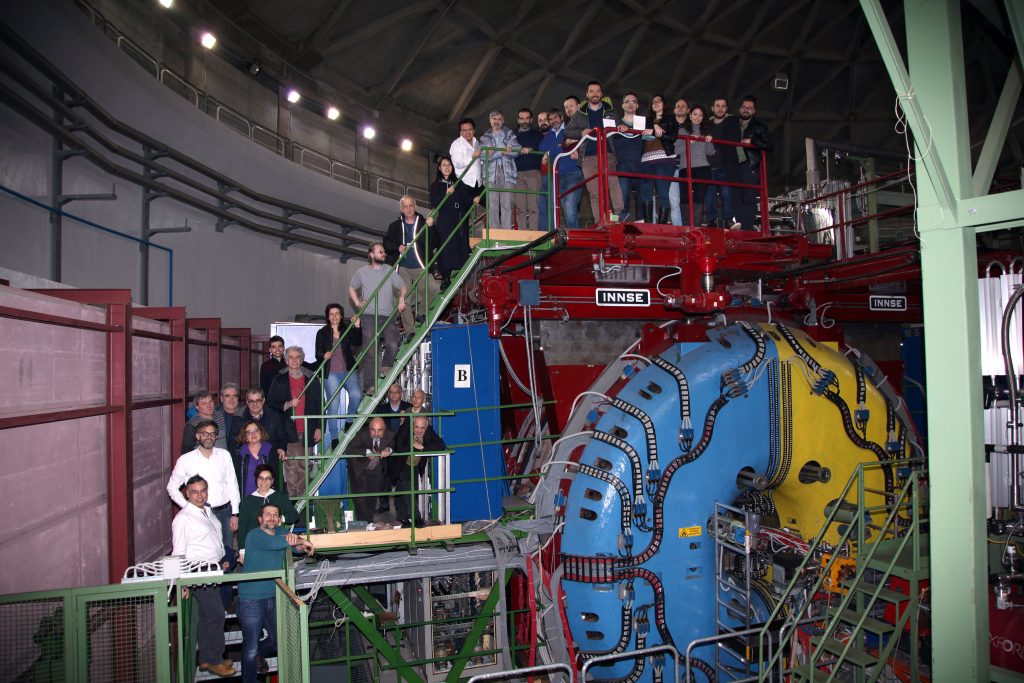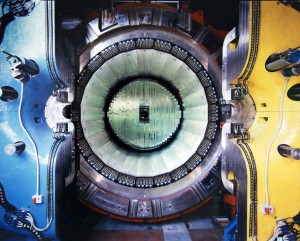On next 30th of March the KLOE-2 experiment will conclude its data-taking at DAΦNE, the Φ-factory collider, after almost twenty years of operation. Actually, the KLOE experiment started to collect its first data on the 14th of April 1999, continuing until 2006; then it was again on the interaction point in 2010, and with an upgraded apparatus (KLOE-2) from the end of 2014 to date. During its activity KLOE collected 2.5 fb$^{-1}$ of integrated luminosity, while KLOE-2 5.5 fb$^{-1}$ more.
The excellent work of the DAΦNE team – implementing in these last years an innovative configuration of the beam interaction region, developed in Frascati and called “crab-waist” – allowed to achieve the ambitious luminosity goal set for KLOE-2, with the experiment successfully acquiring more than 5 fb$^{-1}$ of luminosity, corresponding to about 15 billions of Φ-mesons produced .
The study of this rich data sample – worldwide unique in terms of typology and statistical relevance – is going to produce a significant number of scientific results. The ongoing analysis will allow to complete the broad KLOE-2 physics program providing important results in several fields, including tests of the fundamental matter-antimatter symmetry of Nature with unprecedented precision, the precision study of the quantum entanglement phenomenon, the study of rare K and η-meson decays and that of strong interactions in low energy processes, photon-photon fusion processes, and the search for new exotic particles as possible manifestation of the dark matter.
The closing of the KLOE-2 data-taking will also mark the conclusion of a long period of activity of the Laboratories that – first with the KLOE experiment, then with KLOE-2 – has involved, on an accelerator machine in Italy, several generations of Italian and foreign physicists in an extraordinary and challenging human and scientific enterprise.
“KLOE meant so much to Frascati and particle physics at INFN” emphasized the LNF Director, Pierluigi Campana, “however our scientific curiosity does not end here. Soon, again using the DAΦNE machine, the PADME data-taking will start, followed by the one of Siddharta2. Furthermore, we are thinking about becoming a centre of excellence in accelerator physics, by revitalizing DAΦNE and applying to host the future EuPRAXIA, the first European plasma-based Free Electron Laser.”
In coincidence with the stop of data-taking, the members of KLOE and KLOE-2 collaborations, the DAΦNE team and the Laboratories will celebrate the achievement of such important milestone with a brief ceremony that will be held on next 30th of March at 11:00 in the “Bruno Touschek” Auditorium (LNF).

Translation by Camilla Paola Maglione, Communications Office INFN-LNF
 INFN-LNF Laboratori Nazionali di Frascati
INFN-LNF Laboratori Nazionali di Frascati
